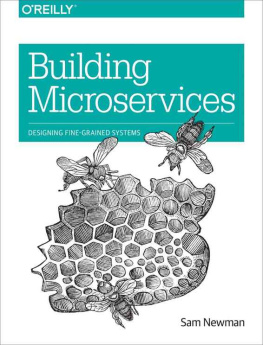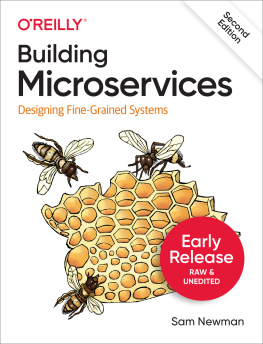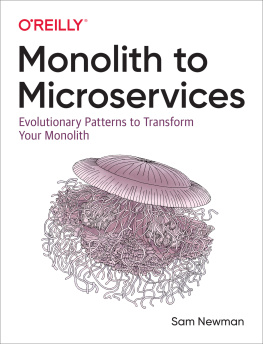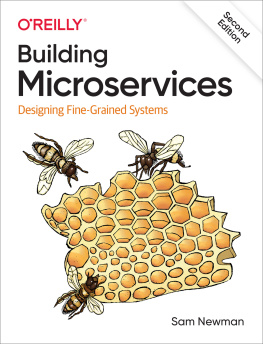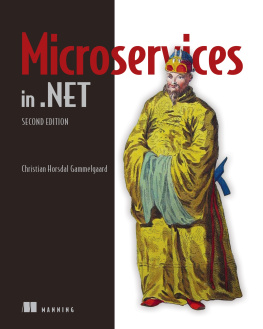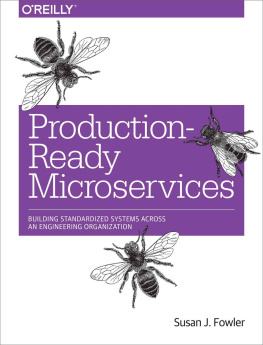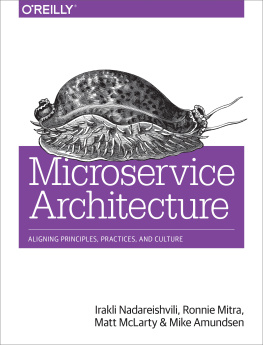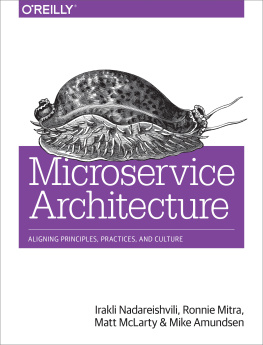Sam Newman - Building Microservices
Here you can read online Sam Newman - Building Microservices full text of the book (entire story) in english for free. Download pdf and epub, get meaning, cover and reviews about this ebook. year: 2015, publisher: OReilly Media, genre: Business. Description of the work, (preface) as well as reviews are available. Best literature library LitArk.com created for fans of good reading and offers a wide selection of genres:
Romance novel
Science fiction
Adventure
Detective
Science
History
Home and family
Prose
Art
Politics
Computer
Non-fiction
Religion
Business
Children
Humor
Choose a favorite category and find really read worthwhile books. Enjoy immersion in the world of imagination, feel the emotions of the characters or learn something new for yourself, make an fascinating discovery.
- Book:Building Microservices
- Author:
- Publisher:OReilly Media
- Genre:
- Year:2015
- Rating:4 / 5
- Favourites:Add to favourites
- Your mark:
Building Microservices: summary, description and annotation
We offer to read an annotation, description, summary or preface (depends on what the author of the book "Building Microservices" wrote himself). If you haven't found the necessary information about the book — write in the comments, we will try to find it.
Distributed systems have become more fine-grained in the past 10 years, shifting from code-heavy monolithic applications to smaller, self-contained microservices. But developing these systems brings its own set of headaches. With lots of examples and practical advice, this book takes a holistic view of the topics that system architects and administrators must consider when building, managing, and evolving microservice architectures.
Microservice technologies are moving quickly. Author Sam Newman provides you with a firm grounding in the concepts while diving into current solutions for modeling, integrating, testing, deploying, and monitoring your own autonomous services. Youll follow a fictional company throughout the book to learn how building a microservice architecture affects a single domain.
- Discover how microservices allow you to align your system design with your organizations goals
- Learn options for integrating a service with the rest of your system
- Take an incremental approach when splitting monolithic codebases
- Deploy individual microservices through continuous integration
- Examine the complexities of testing and monitoring distributed services
- Manage security with user-to-service and service-to-service models
- Understand the challenges of scaling microservice architectures
Sam Newman: author's other books
Who wrote Building Microservices? Find out the surname, the name of the author of the book and a list of all author's works by series.

